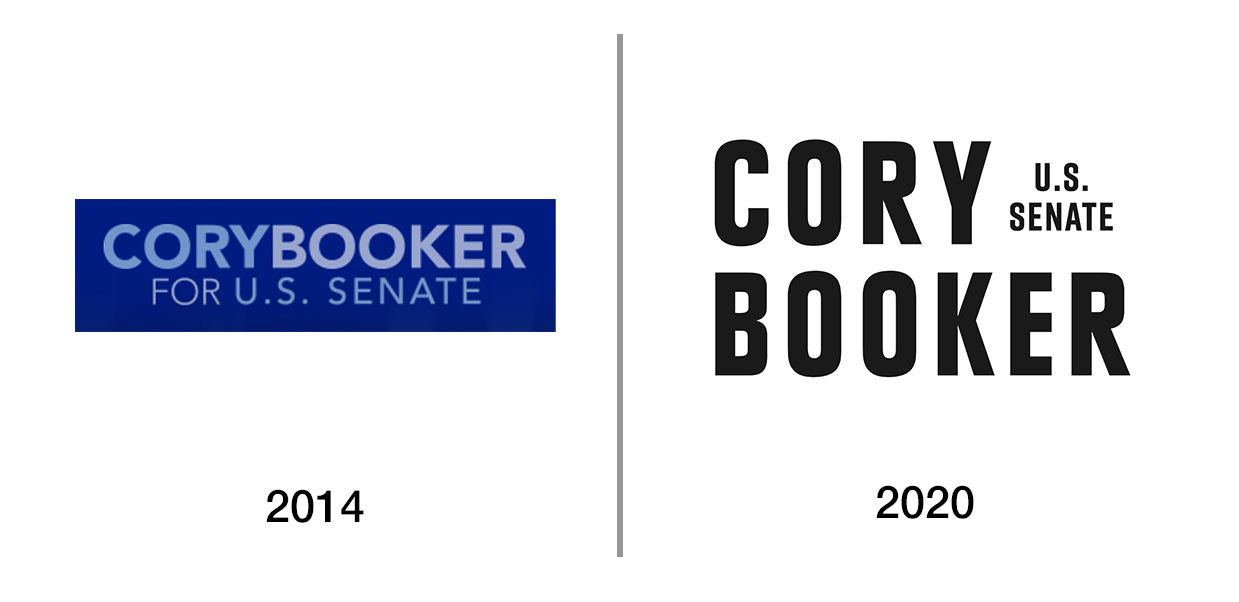
Congressional campaign logos are great for spotting political design trends because candidates run for reelection at regular intervals and their logos have the potential to be updated on a fairly consistent basis.
I went through campaign logos for incumbent House and Senate candidates across the country and compared their current visual identities to what they used for their previous congressional races. Senate candidates were especially interesting since they’re up for reelection every six years, more than enough time for design styles to change, but a few House candidates made some interesting updates too.
Here’s how 11 congressional campaign logos were redesigned for 2020:
Sen. Susan Collins (R-Maine)

Collins made only minor adjustments to her campaign logo, with a new typeface that has more rounded Cs and Os, as well as a slightly different star icon.
Rep. Dan Crenshaw (R-Texas)

Now this is something I haven’t seen before. Crenshaw dropped his wordmark logo completely and is instead using an image of his likeness with his instantly recognizable eyepatch. The new text-free logo is used alongside American and Texas flags on items for sale in Crenshaw’s online store. No words necessary.
Rep. Eric Swalwell (D-California)

This is undoubtably the logo glow up of the year. Swalwell’s 2018 logo was a mess, with all those stars and whatever’s going on inside that letter A. He’s now using his 2020 presidential campaign logo for his House reelection race, and it’s a solid update.
Sen. Cory Booker (D-New Jersey)

Booker’s new logo, designed by the creative agency Wide Eye, was inspired by his presidential campaign visual identity and it brings out a lot more personality than his 2014 logo. The new typeface, Plak Black Condensed, was chosen for its vaguely sci-fi look (read more about Booker’s rebrand in the February 11 issue of Yello).
Subscribe to Yello for the latest news on the culture, branding, and visual rhetoric of politics, delivered each week:
Sen. Lindsey Graham (R-South Carolina)

Graham’s new logo looks much more contemporary than his 2014 one, but it’s still pretty generic.
Senate Majority Leader Mitch McConnell (R-Kentucky)

McConnell is still using a mashup of an American flag with a map of Kentucky in his logo, but the new version is more modern.
Sen. Ed Markey (D-Massachusetts)

I’ll be honest, Markey’s new logo looks more dated to me than his 2014 one.
Update: Markey’s 2020 logo was also used in 2014 along with above Massachusetts state map logo, which helps explain that.
Sen. Martha McSally (R-Arizona)

McSally seemed to emphasize her U.S. Air Force credentials during her 2018 run with an eagle illustration, while her 2020 logo goes full Arizona, with a state flag-inspired design. Her new orange and blue color palette stands out since Republican candidates usually stick to the standard red, white, and blue.
Sen. Tom Cotton (R-Arkansas)

Cotton’s new logo feels very 1990s/2000s to me, with its serif typeface and a more literal American flag illustration instead of an abstracted flag design. Also, the fact that this potential 2024 presidential contender dropped his Arkansas state outline for an American flag seems to send a message, no?
Sen. Doug Jones (D-Alabama)

Jones’ 2017 logo was pretty standard and forgettable, but this year he’s using a new, thicker typeface and a stylized O with a star inside, along with the inclusion of his campaign slogan “One Alabama.”
Rep. Justin Amash (L-Michigan)

Amash is the only candidate who hasn’t changed his logo that I decided to include in the list. He ran as a Republican in 2018, but left the party last year and is now a Libertarian, so I assumed he’d use a new logo that reflected that change. Instead, Amash is sticking with his old logo that seems to pay homage to both parties. Rendered in Republican red, the logo dots the letter I with a flame, a symbol common in Libertarian campaign design.



